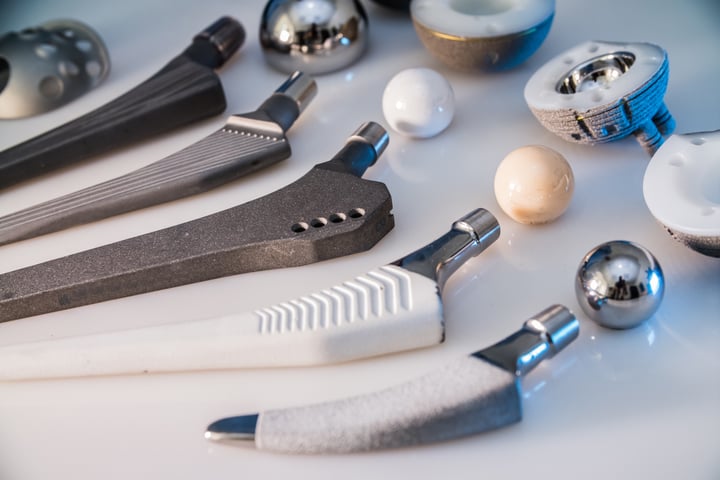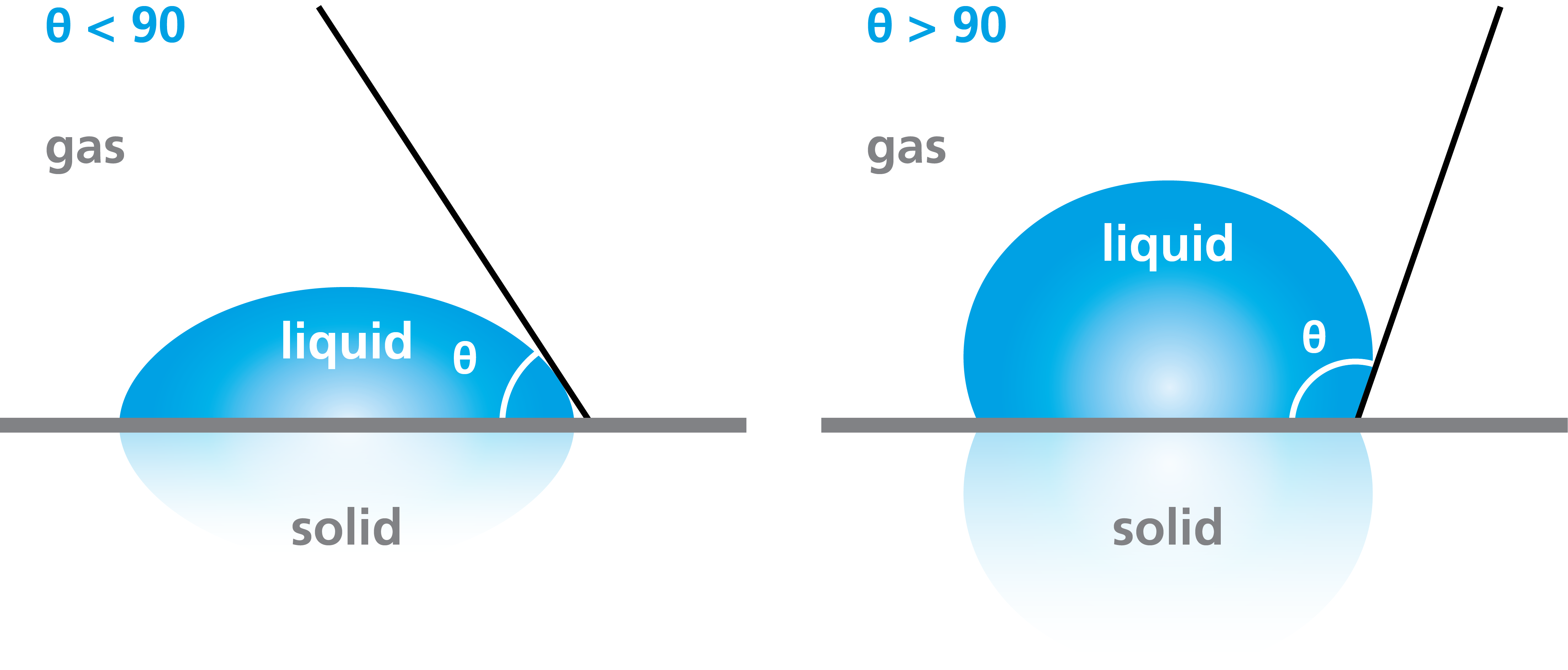
When a material gets in contact with bodily fluids a cascade of events is initiated. After water molecules, the proteins will adsorb followed by cell attachment and proliferation. Interactions that happen at the material surface are greatly influenced by the wettability of the material. For this reason, wettability measurements are one of the first tests done when biocompatibility is being evaluated.
Sessile drop or a static contact angle is a quick and simple way to get valuable information about your surface. Water contact angle measurements are used to determine whether the surface is hydrophilic or hydrophobic. If the water contact angle is below 90 degrees, the surface is called hydrophilic if the contact angle is above 90 degrees, the term hydrophobic is used.

The static contact angle is easily measured with the optical tensiometer that includes a camera for drop visualization, a stage for the sample and a dispenser to place the drop on the sample. As the drop volume and the measurement time can be pre-set in the software, the measurements are typically done with a simple click of a button. The software will automatically analyze the image of the drop and give the contact angle value.
Surface roughness as such is important in biomedical applications as it has been shown to affect bacterial adhesion and cell proliferation. Roughness is also important in terms of wettability. It has been stated that surface roughness enhances the underlying wettability of the surface. This means that if the smooth surface is chemically hydrophilic (i.e. water contact angle below 90), adding roughness to it will make it even more hydrophilic. The same goes for hydrophobic surfaces. A smooth hydrophobic surface (i.e. water contact angle above 90) will be even more hydrophobic if that surface is rough.
If the roughness is not considered, the measured contact angle will always be also dependent on the surface roughness. By measuring roughness corrected contact angles, it is possible to separate the effect of roughness from the surface chemistry.
Contact angle measurements can provide information about hydrophilicity/-phobicity of the surface. However, the contact angle is always dependent on the liquid being used. Surface free energy on the other hand, is a property of the solid surface itself. Surface free energy is sometimes also called a surface tension of a solid as it’s a force acting on a solid-air interface where as surface tension is measured at the liquid-air interface.
Surface free energy is typically divided into polar and dispersive parts and in some cases, the polar part is further divided into acid and base components. Surface free energy cannot be directly measured but it’s calculated through contact angle measurements.
Surface free energy and its components have been shown to correlate with bacterial and cell adhesion.
As with static contact angle measurements, the roughness plays an important role also in surface free energy determination. The surface free energy of a material, and what cells encounter, for example, is ultimately the same independent whether the material is rough or not. However, as the surface free energy is determined by contact angle data on which the surface roughness can have a huge effect, it is of utmost importance to take the roughness into account. This can be done by using roughness corrected contact angles to calculate the roughness corrected surface free energy of your material.
If you would like to read more about how these, and other wettability measurements are used in biomedical applications, please download the white paper below.
Learn about the effect of surface roughness and wettability on biocompatibility of biomaterials and medical devices.
This blog post describes the importance of fiber diameter on the contact angle measurements of fibers with Wilhelmy method
Standard contact angle measurement considers the surface's chemical properties. The influence of surface roughness is added by utilizing the Wenzel equation.
Wettability is crucial in biomedical applications as it affects protein adsorption, cell adhesion, blood coagulation, and bacterial colonization.
Liquids’ ability to wet a solid surface has widespread importance in many everyday products and industrial processes.
Membrane wettability is a key property to ensure success of membrane distillation process
Hydrophobic surface properties are needed in contact with the food product while hydrophilicity is needed when printing on food packaging.
Wettability is pivotal in pharmaceutical dosage form manufacturing as well as in drug efficacy.
Understanding the wettability of membranes is essential for optimizing these processes and achieving desired separation outcomes.
